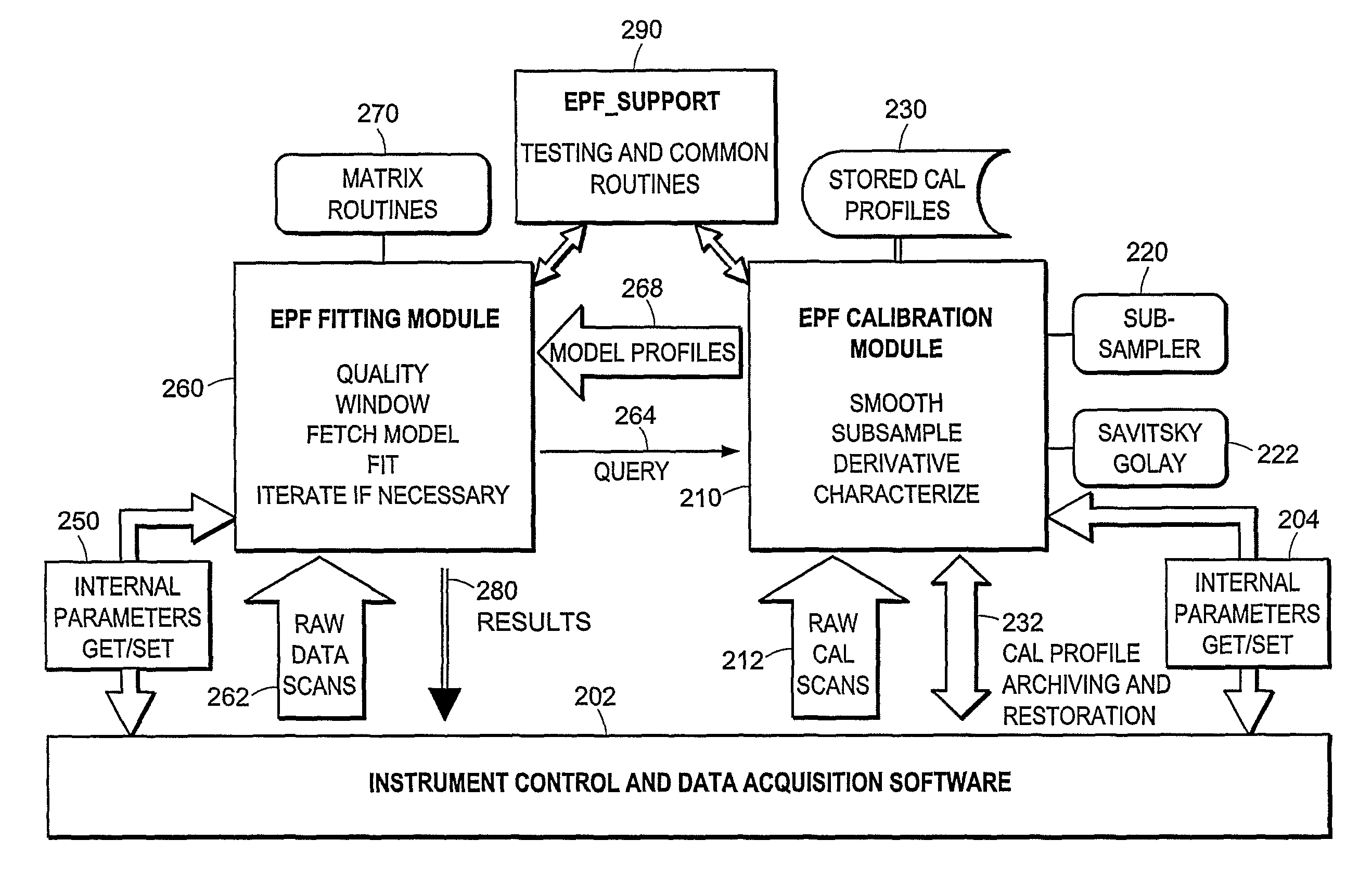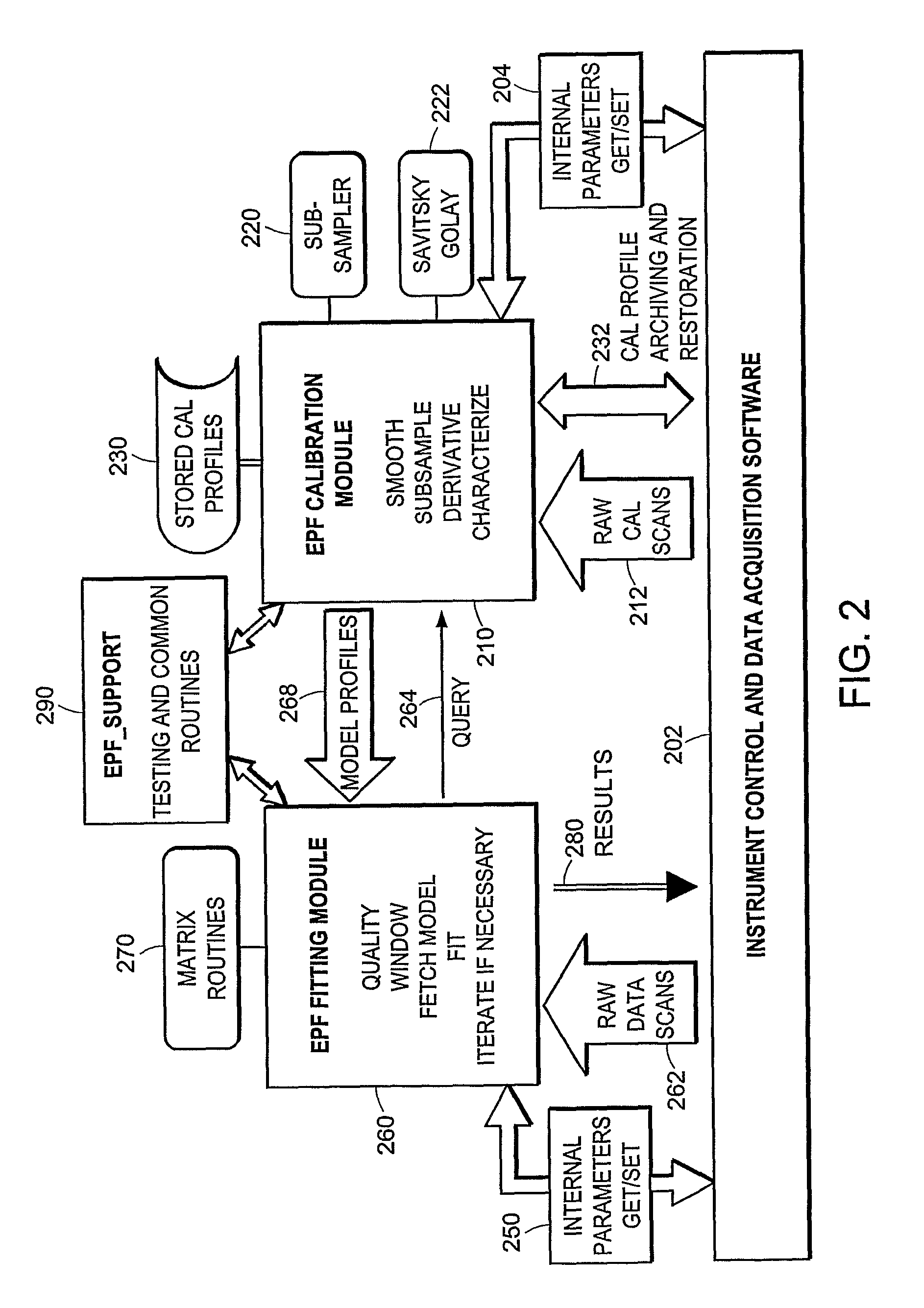Method and apparatus for quantitating surface-binding optical resonance profiles
- Summary
- Abstract
- Description
- Claims
- Application Information
AI Technical Summary
Benefits of technology
Problems solved by technology
Method used
Image
Examples
Embodiment Construction
[0087]The current invention utilizes Empirical Profile Fits (EPF) to quantitate surface-binding optical resonance profiles. The EPF peak finding process has two stages, the Calibration stage and the Fit stage. In the Calibration stage, a calibration scan is obtained with relatively fine angle or wavelength spacing over a range sufficient to include full resonance profiles for all regions. Smoothed, subsampled model profiles for each Region of Interest (ROI) are generated, together with first derivative curves and certain diagnostic information. In the Fit stage, individual ROI scans are used for measurement of angle or wavelength shifts relative to the calibration model. The run time scans may be at much coarser angle spacing, may cover entirely different angle ranges than the calibration data, and may have either scan polarity. Resonance shifts, estimated absolute angles or wavelengths, time of resonance minimum, and additional diagnostic and quality information are returned.
[0088]...
PUM
 Login to View More
Login to View More Abstract
Description
Claims
Application Information
 Login to View More
Login to View More - R&D
- Intellectual Property
- Life Sciences
- Materials
- Tech Scout
- Unparalleled Data Quality
- Higher Quality Content
- 60% Fewer Hallucinations
Browse by: Latest US Patents, China's latest patents, Technical Efficacy Thesaurus, Application Domain, Technology Topic, Popular Technical Reports.
© 2025 PatSnap. All rights reserved.Legal|Privacy policy|Modern Slavery Act Transparency Statement|Sitemap|About US| Contact US: help@patsnap.com



